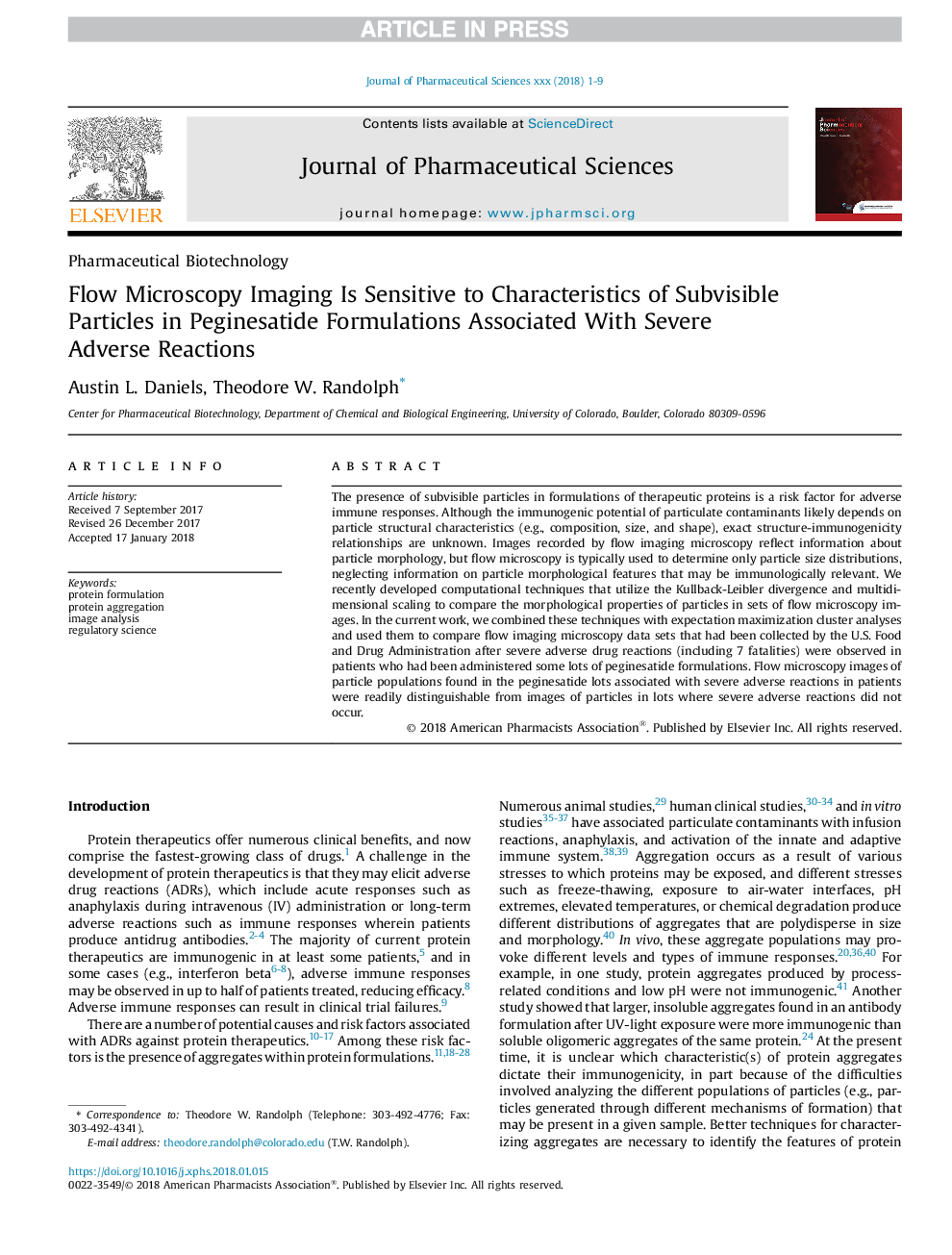| Article ID | Journal | Published Year | Pages | File Type |
|---|---|---|---|---|
| 8513295 | Journal of Pharmaceutical Sciences | 2018 | 9 Pages |
Abstract
The presence of subvisible particles in formulations of therapeutic proteins is a risk factor for adverse immune responses. Although the immunogenic potential of particulate contaminants likely depends on particle structural characteristics (e.g., composition, size, and shape), exact structure-immunogenicity relationships are unknown. Images recorded by flow imaging microscopy reflect information about particle morphology, but flow microscopy is typically used to determine only particle size distributions, neglecting information on particle morphological features that may be immunologically relevant. We recently developed computational techniques that utilize the Kullback-Leibler divergence and multidimensional scaling to compare the morphological properties of particles in sets of flow microscopy images. In the current work, we combined these techniques with expectation maximization cluster analyses and used them to compare flow imaging microscopy data sets that had been collected by the U.S. Food and Drug Administration after severe adverse drug reactions (including 7 fatalities) were observed in patients who had been administered some lots of peginesatide formulations. Flow microscopy images of particle populations found in the peginesatide lots associated with severe adverse reactions in patients were readily distinguishable from images of particles in lots where severe adverse reactions did not occur.
Related Topics
Health Sciences
Pharmacology, Toxicology and Pharmaceutical Science
Drug Discovery
Authors
Austin L. Daniels, Theodore W. Randolph,
